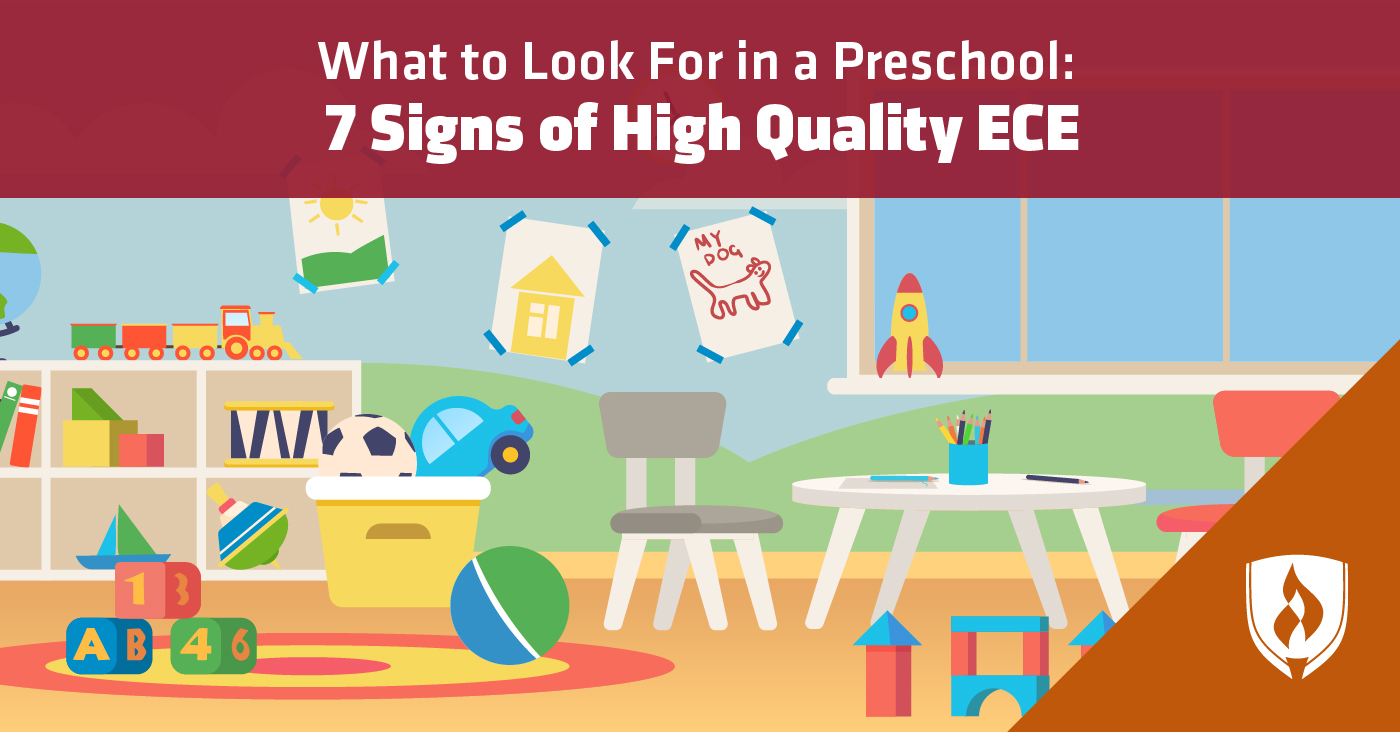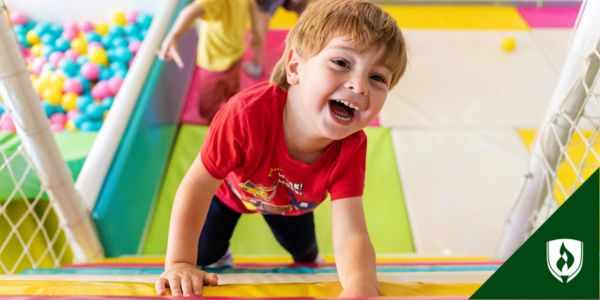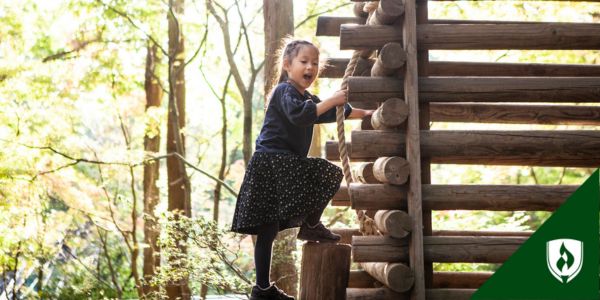
Knowing what to look for in a preschool is a big question that parents face every year as they prepare to send their kids off on the start of their educational journey. They may be wondering, Does this early childhood education (ECE) program have the resources my child needs to thrive? Do the teachers know how to support best practices in early learning?
But parents aren’t the only ones wondering what to look for in a preschool! Teachers and other early childhood professionals may also be curious about the signs of a good program so they know they’re entering a workplace that supports and encourages little ones during these critical years of early development.
Many of the signs that indicate a high-quality ECE program apply to parents as well as teachers searching for their next workplace—but it’s not always easy to tell the quality of a preschool from the outside looking in.
7 Signs of a high-quality ECE provider
We uncovered some telltale signs of a high-quality ECE program so you’ll know exactly what to look for, whether you’re searching for a classroom for your children or a new work environment for yourself.
1. Kids look happy—and so does the staff
It seems like a no-brainer that the little ones learning at preschool should be having a good time, but it’s less obvious that teachers and other staff should be enjoying themselves, too. However, the teachers’ moods can be your best indicator of the day-to-day operation of the classroom.
Pay close attention to the mood in the room the next time you tour an ECE facility. “Everyone—kids and educators—should be happy, relaxed and engaged in whatever they are doing,” says Stefani Ilkic, co-owner and main preschool teacher at Sunnyside Daycare.
Teachers that seem stressed, frazzled or rushed could be an indicator of underlying problems in the program, like overworked staff, disorganized schedules or a lack of professional development resources. Another key sign that teachers have the support they need? “A break room and resource room showing teachers have a place to wind down and a place to lesson-plan on site,” says Tarun Patel, owner of The Goddard School.
2. Teachers engage with children on their level
Many people have a mental image of a teacher standing at the front of the room shouting at misbehaving children. That may have been what school was like in decades past, but now we know that inspiring fear in children isn’t the best way to prepare their minds for learning.
“Educators should, for the most part, be getting down to the children's level and talking to them in a respectful and kind manner—not talking at them or barking orders,” Ilkic says. The University of Maine shares that speaking to a child at his or her level is especially important because eye contact improves communication and helps the child see that adults are really listening to what they have to say.1
Seeing teachers engage with children in a courteous way is a sure sign of a high-quality program that values mutual respect and kindness.
3. The environment is calm and clean
Preschools don’t have to be dens of chaos—in fact, they shouldn’t be! Too many bright colors or loud patterns can cause sensory overstimulation in young children, and excessive clutter is distracting and overwhelming for adults and kids alike.
“The environment should be welcoming and calming—neutral tones, photos of the children hanging, home-like decor,” Ilkic says. If kids feel safe and welcomed in their space, they’ll be better able to focus on learning.
That’s not to say that a preschool classroom should be spotless, though! “Some clutter and mess should be expected in a preschool setting, but it should not be dirty,” Ilkic says.
4. Spaces are designed for independence
Children spend most of their time in a world built for adults, but preschool is a place where things should be tailored to them. In a high-quality ECE setting, kids will have access to shelves with books and materials, small chairs and tables sized just for them, and the ability to reach toilets and sinks without help.
“[The] classroom has plenty of supplies and materials for children to play with,” Patel says, and it should be well-organized and accessible to kids when they want it. This helps foster their independence and empowers them to make decisions and take responsibility.
“Do the children have independence? Are the supplies and toys available to them or do they have to ask every time they want something?” Ilkic advises keeping these questions in mind as you observe children in the classroom.
5. Communication is clear
High-quality ECE programs value open lines of communication between teachers and parents. This includes everything from what a child did during the day to reminders about upcoming field trips. It’s also important that parents feel comfortable enough to inform teachers of any big changes that might affect a child at school, such as a move or the death of a loved one.
“Clear communication between the staff, parents and children is evident” in a high-quality program, according to Ilkic. “There are signs hanging on the walls with info, staff make themselves available to meet with parents and other means like agendas, emails, and so on are in place for daily communications.”
If you don’t see communication taking place via bulletin board or newsletter handout, don’t be afraid to ask the director how the school stays in touch with families. Some schools may use an app or other digital communication that isn’t as easy to spot on a tour—but a high-quality program will have a ready answer to this question!
6. Materials are open-ended
So-called “educational toys” aren’t something you’ll find in a high-quality preschool setting. Children in top-notch ECE programs will be “experimenting with materials, not worksheets,” Patel says. Open-ended materials encourage children to think creatively and explore their environment.
The National Association for the Education of Young Children (NAEYC) recommends staying away from programs that use “worksheets, flashcards or toys that can be used just one way” and that offer “materials that don’t let children make choices and solve problems.”2 Instead, look for toys that can be played with in many different ways, like blocks, dress-up clothes, light tables, boxes and art supplies.
This same idea about open-ended play applies to art projects. Patel recommends you take a look at the children’s artwork hanging in the classroom, saying that it should be “process based, not product based.” If everyone’s finished piece looks the same, it’s a sign that children weren’t given the opportunity to explore art materials in a more creative way.
7. Children get to take their time
Children are often rushed from one activity to the next as they’re dragged along on busy adult schedules. However, kids need to take their time to solve problems, grapple with new ideas and observe the world around them.
Ilkic suggests looking for high-quality programs where children are allowed to make mistakes and take their time working through problems. “Are children given time to change their own clothing and put on their shoes or does the educator dress them? Are they encouraged to talk through a conflict or does the teacher tell them how to fix it?"
She adds that giving kids the time and space they need to figure things out on their own are key as they develop problem-solving skills and gain confidence in their own abilities.
High-quality ECE: Making learning come alive
Knowing what to look for in a preschool is important for parents and educators alike. Now that you’re familiar with the signs of a high-quality ECE program, you’re ready to learn more about how they tie in with the way children learn and grow.
Related Articles:
- Anti-Bullying Lesson Plans: 6 Ideas for Early Childhood Educators
- What is a Child Life Specialist? Helping Kids Cope with Medical Crisis
Deepen your understanding of child development with our article, “Early Childhood Development: Understanding the Milestones.”
1University of Maine, Family Issues Facts, Winning Ways to Talk With Young Children, [accessed September 2019] https://extension.umaine.edu/publications/4077e/.
2National Association for the Education of Young Children, What Does a High-Quality Preschool Program Look Like? [accessed September 2019] https://www.naeyc.org/our-work/families/what-does-high-quality-program-for-preschool-look-like
The Early Childhood Education programs at Rasmussen College are not accredited by the NAEYC Commission on Early Childhood Associate Degree Accreditation. Rasmussen College is not a partner of NAEYC and our programs are not sponsored or endorsed by NAEYC.
Graduates of Early Childhood Education programs at Rasmussen College are not eligible for licensure as a teacher in an elementary or secondary school. A Bachelor’s degree and a state teaching license are typically required to work as a teacher in a public school and some private school settings. States, municipalities, districts or individual schools may have more stringent licensing requirements. Students must determine the licensure requirements in the state and school in which they intend to work.
Childcare facilities and the states in which they are located establish qualifications for staff who work with children, and often implement guidelines regarding age, education, experience and professional development. Students must determine the licensure requirements for the state and facilities in which they work.
This program has not been approved by any state professional licensing body, and this program is not intended to lead to any state-issued professional license. For further information on professional licensing requirements, please contact the appropriate board or agency in your state of residence.




